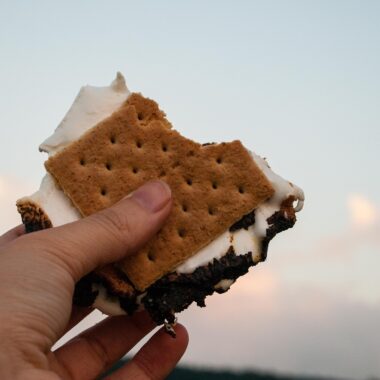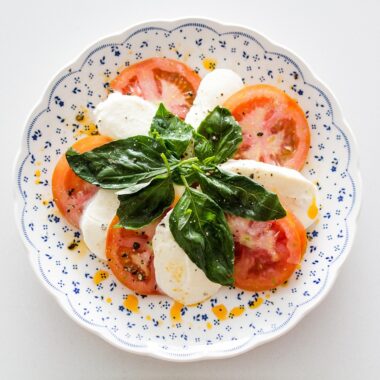French red wine has long been celebrated as one of the world’s most exquisite beverages, embodying centuries of tradition, craftsmanship, and regional uniqueness. Whether you are a seasoned wine connoisseur or a novice exploring the expansive world of wine, understanding the nuances of French red wines will elevate your appreciation for these liquid masterpieces.
This article delves into the best French red wines, their regions, flavor profiles, and how to choose the perfect bottle for any occasion.
Understanding French Wine Regions
France’s wine reputation is built upon its terroir—the combination of soil, climate, and landscape that imparts unique characteristics to the grapes. Each region specializes in specific grape varieties and wine styles, making French wines both diverse and deeply rooted in their origins.
Bordeaux
Notable Grapes: Cabernet Sauvignon, Merlot, Cabernet Franc
Top Picks: Château Margaux, Château Latour, Château Pétrus
Bordeaux, often referred to as the “king of red wine regions,” produces some of the most prestigious wines in the world. Divided by the Gironde River, its Left Bank is dominated by Cabernet Sauvignon, offering structured, tannic wines with aging potential. The Right Bank focuses on Merlot, producing softer, fruit-forward wines.
Recommendation: Château Pétrus, a Pomerol icon, offers lush, velvety Merlot-dominated blends that captivate the palate.
Burgundy (Bourgogne)
Notable Grapes: Pinot Noir
Top Picks: Domaine de la Romanée-Conti, Domaine Leroy, Domaine Dujac
Burgundy’s red wines are almost exclusively Pinot Noir, celebrated for their elegance and complexity. Unlike the bold Bordeaux wines, Burgundy reds are often lighter in body but incredibly nuanced, showcasing red fruit, earth, and floral notes.
Recommendation: Domaine de la Romanée-Conti, one of the most sought-after wines globally, is renowned for its ethereal balance and unparalleled finesse.
Rhône Valley
Notable Grapes: Syrah (Northern Rhône), Grenache, Mourvèdre (Southern Rhône blends)
Top Picks: Château de Beaucastel, E. Guigal’s La La wines
The Rhône Valley offers two distinct styles. Northern Rhône wines, such as Hermitage and Côte-Rôtie, feature Syrah, known for its peppery, smoky intensity. Southern Rhône wines, like Châteauneuf-du-Pape, blend Grenache, Mourvèdre, and Syrah for rich, robust profiles.
Recommendation: Château de Beaucastel’s Châteauneuf-du-Pape exemplifies the power and complexity of Southern Rhône wines.
Loire Valley
Notable Grapes: Cabernet Franc
Top Picks: Domaine Charles Joguet, Clos Rougeard
Though better known for its whites, the Loire Valley’s Cabernet Franc wines are charming and vibrant, offering red fruit flavors with herbal and mineral undertones.
Recommendation: Clos Rougeard’s Saumur-Champigny is a benchmark for Loire Valley reds, offering exceptional depth and longevity.
Provence
Notable Grapes: Grenache, Syrah, Mourvèdre
Top Picks: Domaine Tempier
While Provence is synonymous with rosé, its red wines, particularly Bandol, are worth exploring. These wines, made from Mourvèdre, are deeply aromatic, with flavors of black fruit, leather, and spices.
Recommendation: Domaine Tempier’s Bandol Rouge captures the essence of Provence’s terroir with elegance and power.
Iconic French Red Wines
Certain wines transcend regional acclaim, achieving legendary status for their unparalleled quality and legacy. Here are some of the best French red wines:
Château Margaux (Bordeaux)
Tasting Notes: Aromas of blackberry, violets, and cedar; flavors of blackcurrant, tobacco, and graphite.
Why It Stands Out: Known for its exceptional balance of power and grace, Château Margaux is a quintessential Bordeaux experience.
Domaine de la Romanée-Conti Romanée-Conti (Burgundy)
Tasting Notes: Red cherry, rose petals, truffle, and a silky texture.
Why It Stands Out: With its limited production and mythical status, this wine is a collector’s dream.
Château de Beaucastel Châteauneuf-du-Pape (Rhône Valley)
Tasting Notes: Plum, black pepper, lavender, and a rich, velvety finish.
Why It Stands Out: A masterful blend of Southern Rhône varieties that captures the region’s essence.
E. Guigal Côte-Rôtie La Landonne (Northern Rhône)
Tasting Notes: Dark fruit, smoked meat, licorice, and robust tannins.
Why It Stands Out: La Landonne is a Syrah powerhouse, offering extraordinary depth and aging potential.
How to Choose the Best French Red Wine
Selecting the perfect French red wine can be daunting given the vast choices. Here are some tips to guide you:
Know the Occasion
For celebrations: Opt for Bordeaux Grand Cru or Burgundy Premier Cru.
For casual gatherings: Rhône blends or Loire Valley reds are approachable and versatile.
Understand Your Preferences
Do you prefer full-bodied wines? Go for Bordeaux or Southern Rhône.
Do you enjoy lighter, aromatic wines? Choose Burgundy or Loire Valley Cabernet Franc.
Check the Vintage
Vintage plays a crucial role in wine quality, especially in regions like Bordeaux and Burgundy. Research vintages to ensure optimal drinking windows.
Set a Budget
French wines range from affordable to astronomical. Excellent options exist at all price points, so identify your budget beforehand.
Explore Lesser-Known Regions
While Bordeaux and Burgundy dominate the spotlight, exploring regions like Languedoc, Cahors, and Beaujolais can yield delightful surprises at a fraction of the cost.
Food Pairings with French Red Wine
Pairing French red wine with food enhances both the wine and the meal. Here are some classic combinations:
Bordeaux
Pair with: Ribeye steak, lamb chops, hard cheeses
Why: Bordeaux’s tannins cut through the richness of red meats and aged cheeses.
Burgundy
Pair with: Duck, mushroom risotto, roasted chicken
Why: The delicate flavors of Pinot Noir complement earthy and subtle dishes.
Rhône Valley
Pair with: Barbecue, ratatouille, spiced lamb
Why: Rhône wines’ bold flavors stand up to smoky and spiced dishes.
Loire Valley
Pair with: Pork tenderloin, grilled vegetables, goat cheese
Why: Loire reds’ acidity and freshness make them versatile food wines.
Provence
Pair with: Mediterranean cuisine, beef stew, aged goat cheese
Why: Bandol reds’ complex flavors harmonize with hearty, herb-infused dishes.
How to Store and Serve French Red Wine
Proper storage and serving techniques ensure you get the best experience from your French red wine:
Storage Tips
Keep wine in a cool, dark place with consistent temperature (12-16°C or 55-60°F).
Store bottles horizontally to keep corks moist.
Avoid vibrations and strong odors.
Serving Tips
Decant older wines to remove sediment and aerate younger wines to open up flavors.
Serve at the appropriate temperature:
Light reds (e.g., Burgundy): 14-16°C (57-60°F)
Full-bodied reds (e.g., Bordeaux): 16-18°C (60-65°F)
The Future of French Red Wine
While steeped in tradition, French winemakers are embracing innovation to adapt to changing climates and consumer preferences. Organic, biodynamic, and natural winemaking practices are becoming more prevalent, ensuring sustainability and authenticity.
French red wine is a testament to the artistry and passion of winemakers who have honed their craft over generations. From the prestigious vineyards of Bordeaux to the elegant slopes of Burgundy, each bottle tells a story of its terroir and heritage. Whether you’re savoring a glass of Château Margaux or exploring the approachable charm of a Loire Valley red, French red wines offer endless opportunities for discovery and enjoyment.
Investing time in understanding these wines not only enhances your appreciation but also allows you to savor some of the finest creations in the world of wine. Cheers to discovering your next favorite French red wine!


















